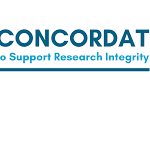
“How people with disabilities are treated in everyday life is influenced by the way that they’re portrayed in the media, but there is very little evidence to explain exactly how the visibility of para-sport athletes makes a difference to the everyday lives of people with disabilities,” explains Professor Silk, “There is a need to find out how para-sport broadcasts are put together and what audiences think of such coverage. This can help us to understand how such coverage changes the way people with disabilities are treated and perceived.”
The project builds on previous research conducted at Bournemouth that explored the way athletes with disabilities were represented in the media during the 2012 Paralympic Games. This coverage celebrated athletes for their achievements as ‘super humans’. Subsequent research questions the narrative of para-athletes as ‘super-humans’ and suggests that many people with disabilities largely didn’t benefit from the legacy of the Games.”
“The coverage of the last two Paralympic Games has certainly elevated the visibility of certain types of disability,” continues Professor Silk, “and this might open the door to potential social change. Despite this, much work is needed to better understand the ways in which athletes are presented in the media and the very real barriers faced by people with disabilities when participating in everyday life.”
“To find out more about the role of Paralympic coverage in everyday life, the research addresses how different audiences make sense of this coverage. We’ll also be analysing broadcast coverage of this year’s Paralympics and talking to staff from Channel 4 – the UK’s official Paralympic broadcaster and a project partner on this research. We want to find out more about their editorial decision-making process. We’ll be sharing our findings through an exhibition and full-length documentary.”
“We’re going to be working with a wide range of people and organisations – Paralympics GB, former Paralympians, disability artists and activists to name just a few – to develop recommendations that will impact future coverage of para-sport. We want to influence para-sport coverage so that it’s inclusive, stereotype-free and makes a difference to the daily lives of people with disabilities. Ultimately we hope that our project will help to positively influence the way that para-athletes are portrayed through Paralympic broadcasts across the world.”
 Prestigious Prize to be awarded to BU Paralympic Project
Prestigious Prize to be awarded to BU Paralympic Project BU researchers pick up two awards at International Communication Association (ICA) conference
BU researchers pick up two awards at International Communication Association (ICA) conference










 Fourth INRC Symposium: From Clinical Applications to Neuro-Inspired Computation
Fourth INRC Symposium: From Clinical Applications to Neuro-Inspired Computation Writing policy briefs
Writing policy briefs Upholding Excellence: The Concordat to Support Research Integrity
Upholding Excellence: The Concordat to Support Research Integrity Today’s Documentation Will Serve Tomorrow’s Justice
Today’s Documentation Will Serve Tomorrow’s Justice ECR Funding Open Call: Research Culture & Community Grant – Application Deadline Friday 12 December
ECR Funding Open Call: Research Culture & Community Grant – Application Deadline Friday 12 December MSCA Postdoctoral Fellowships 2025 Call
MSCA Postdoctoral Fellowships 2025 Call ERC Advanced Grant 2025 Webinar
ERC Advanced Grant 2025 Webinar Horizon Europe Work Programme 2025 Published
Horizon Europe Work Programme 2025 Published Horizon Europe 2025 Work Programme pre-Published
Horizon Europe 2025 Work Programme pre-Published Update on UKRO services
Update on UKRO services European research project exploring use of ‘virtual twins’ to better manage metabolic associated fatty liver disease
European research project exploring use of ‘virtual twins’ to better manage metabolic associated fatty liver disease